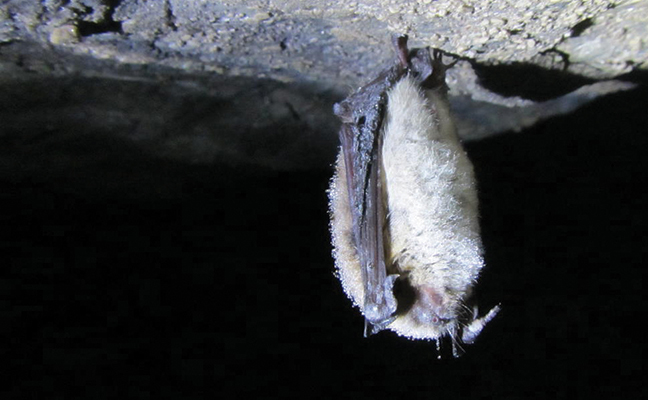White-nose syndrome — a fungal disease that affects hibernating bats — has been confirmed in Kansas, which marks it as the 32nd state to confirm the presence of the disease, according to the Kansas Department of Wildlife, Parks and Tourism.
The disease is caused by a cold-loving fungus that has ravaged insect-eating bat populations in the United States and Canada. The fungus can invade the skin of hibernating bats and cause damage to the wings. It also induces unusual behaviors, such as bats prematurely leaving hibernation, using up fat reserves necessary to survive winter – when conditions are harsh and food (insects) scarce – resulting in death.
The U.S. Geological Survey National Wildlife Health Center in Madison, Wis., tested samples from dead bats in February and March, which showed positive results.
“Detection of white-nose syndrome in a new state underscores the critical importance of work to develop tools for early detection and rapid response to this devastating wildlife disease,” says USGS scientist Anne Ballmann. “The USGS will continue working with resource managers to help conserve imperiled bat species.”
In 2014, the Kansas Department of Wildlife, Parks and Tourism began working with private landowners to enter caves, survey bats and check for the fungus. No positive test results were found until this year, the department says.

Leave A Comment